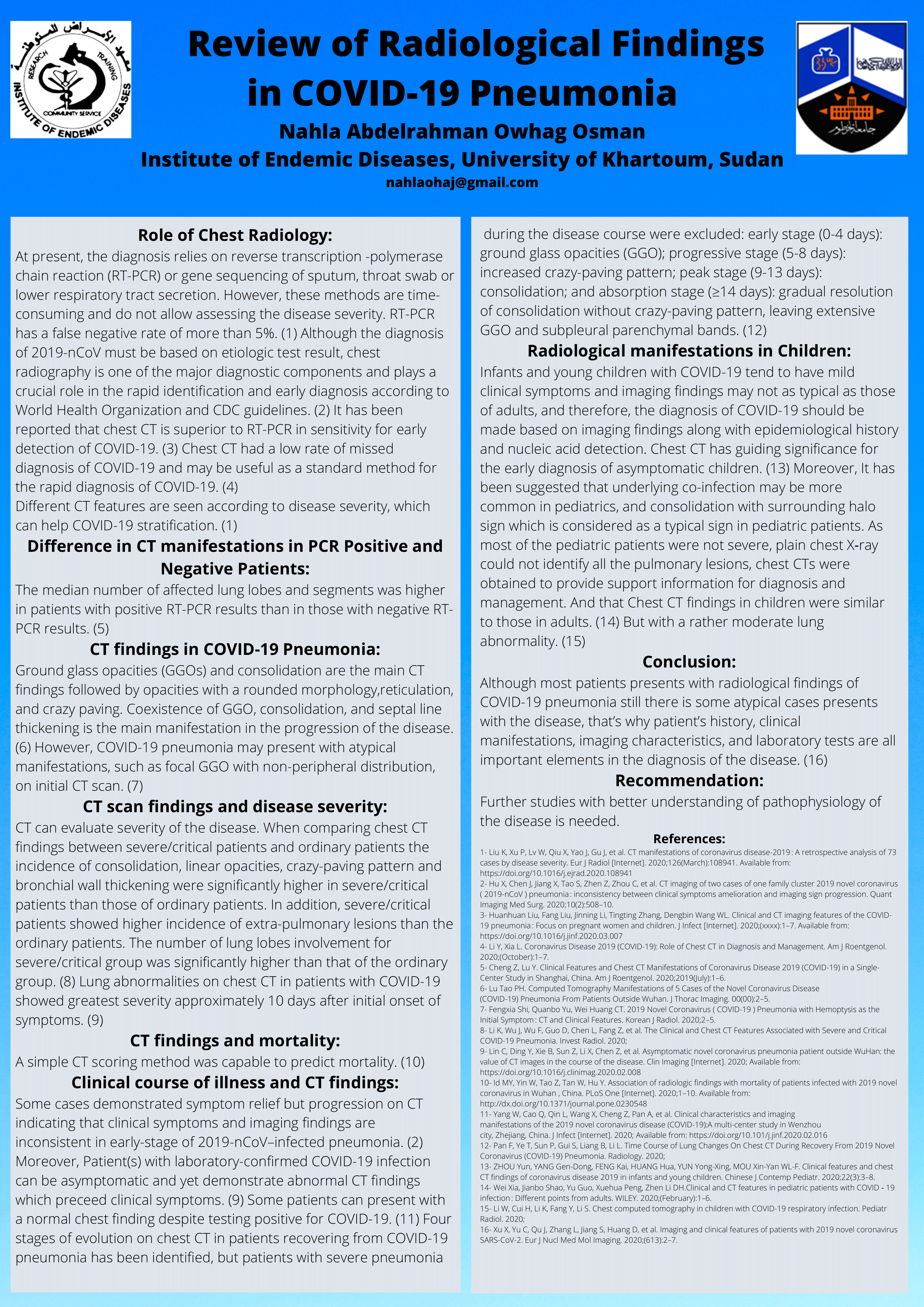Conference 2021 Poster Presentation
Project title
Review of Radiological Findings in COVID-19 Pneumonia
Authors and Affiliations
Nahla Osman1
1. Institute of Endemic Diseases, University of Khartoum, Khartoum, Sudan
Abstract
Role of Chest Radiology:
At present, the diagnosis relies on reverse transcription -polymerase chain reaction (RT-PCR) or gene sequencing of sputum, throat swab or lower respiratory tract secretion. However, these methods are time-consuming and do not allow assessing the disease severity. RT-PCR has a false negative rate of more than 5%. Although the diagnosis of 2019-nCoV must be based on etiologic test result, chest radiography is one of the major diagnostic components and plays a crucial role in the rapid identification and early diagnosis according to World Health Organization and CDC guidelines. It has been reported that chest CT is superior to RT-PCR in sensitivity for early detection of COVID-19. Chest CT had a low rate of missed diagnosis of COVID-19 and may be useful as a standard method for the rapid diagnosis of COVID-19. Different CT features are seen according to disease severity, which can help COVID-19 stratification.
CT findings in COVID-19 Pneumonia:
Ground glass opacities (GGOs) and consolidation are the main CT findings followed by opacities with a rounded morphology, reticulation, and crazy paving. Coexistence of GGO, consolidation, and septal line thickening is the main manifestation in the progression of the disease. However, COVID-19 pneumonia may present with a typical manifestations, such as focal GGO with non-peripheral distribution,on initial CT scan.
CT scan findings and disease severity:
CT can evaluate severity of the disease. When comparing chest CT findings between severe/critical patients and ordinary patients the incidence of consolidation, linear opacities, crazy-paving pattern and bronchial wall thickening were significantly higher in severe/critical patients than those of ordinary patients. In addition, severe/critical patients showed higher incidence of extra-pulmonary lesions than the ordinary patients. The number of lung lobes involvement for severe/critical group was significantly higher than that of the ordinary group. Lung abnormalities on chest CT in patients with COVID-19showed greatest severity approximately 10 days after initial onset of symptoms.
Conclusion:
Although most patients presents with radiological findings of COVID-19 pneumonia still there is some atypical cases presents with the disease, that’s why patient’s history, clinical manifestations, imaging characteristics, and laboratory tests are all important elements in the diagnosis of the disease.

